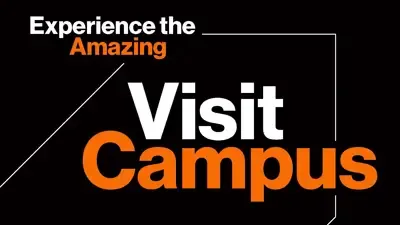Communication Networks Master of Science Degree

Communication Networks
Master of Science Degree
- RIT /
- Rochester Institute of Technology /
- Academics /
- Communication Networks MS
Overview for Communication Networks MS
Why Study Communication Networks at RIT?
STEM-OPT Visa Eligible: The STEM Optional Practical Training (OPT) program allows full-time, on-campus international students on an F-1 student visa to stay and work in the U.S. for up to three years after graduation.
Hands-On Experience: Gain real-world career experience that sets you apart from the competition by participating in an optional co-op.
Three Future-Focused Options: Choose from concentrations in fiber-optic and photonic communications, wireless communications, or network design and management.
Career Readiness: Attain the skills necessary to advance into a managerial role in today's dynamic telecommunications and networking industry.
Telecommunications and communication networks are ever-changing, with new services and products being created and offered through the internet, mobility via wireless technology, extreme capacity created by fiber optics, as well as the evolution of policy and regulation. These are all shaping the telecommunication industry and the networks of the future.
Communication Networks Master of Science
The MS in communication networks develops an advanced level of skill and knowledge needed by the future leaders of the telecommunications industry. This communication networks program is designed for individuals who seek advancement into managerial roles in the dynamic, evolving communications environment. Courses cover converged and IP networks, fiber optic communications, wireless networks, and network design and management.
To help you achieve the level of expertise you are seeking, the communication networks program offers three options: fiber-optic and photonic communications, wireless communications, and network design and management. Each is designed to develop advanced knowledge in a specialty area. Alternatively, you may choose not to pursue a program option. Instead, you may select specific electives from a number or RIT's graduate programs to achieve more specific career goals.
- No announcements are currently running for this program.
Careers and Cooperative Education
Typical Job Titles
| Client Services Engineer | Cloud Support Associate | Information Technology |
| Network Operations Center Engineer | Network Engineer | Network Automation Engineer |
| Systems Network Administrator |
Cooperative Education
What makes an RIT education exceptional? It’s the ability to complete relevant, hands-on career experience. At the graduate level, and paired with an advanced degree, cooperative education and internships give you the unparalleled credentials that truly set you apart. Learn more about graduate co-op and how it provides you with the career experience employers look for in their next top hires.
Cooperative education is optional but strongly encouraged for graduate students in the communication networks MS degree.
Featured Work and Profiles
-
Alum Who Paved the Way for Siri Reveals What’s Coming Next
Kevin Surace '85 (electrical engineering technology) was interviewed on The Jeff Bullas Show podcast, discussing the future of AI, digital twins, and the jobs most at risk (and most safe) in...
Read More about Alum Who Paved the Way for Siri Reveals What’s Coming Next
Curriculum for 2025-2026 for Communication Networks MS
Current Students: See Curriculum Requirements
Students are also interested in
Admissions and Financial Aid
This program is available on-campus only.
| Offered | Admit Term(s) | Application Deadline | STEM Designated |
|---|---|---|---|
| Full‑time | Fall or Spring | Rolling | Yes |
| Part‑time | Fall or Spring | Rolling | No |
Full-time study is 9+ semester credit hours. Part-time study is 1‑8 semester credit hours. International students requiring a visa to study at the RIT Rochester campus must study full‑time.
Application Details
To be considered for admission to the Communication Networks MS program, candidates must fulfill the following requirements:
- Complete an online graduate application.
- Submit copies of official transcript(s) (in English) of all previously completed undergraduate and graduate course work, including any transfer credit earned.
- Hold a baccalaureate degree (or US equivalent) from an accredited university or college in engineering technology, engineering, or a related area. A minimum cumulative GPA of 3.0 (or equivalent) is recommended.
- Satisfy prerequisite requirements and/or complete bridge courses prior to starting program coursework.
- Submit a current resume or curriculum vitae.
- Submit a personal statement of educational objectives.
- Submit two letters of recommendation.
- Entrance exam requirements: None
- Submit English language test scores (TOEFL, IELTS, PTE Academic, etc.), if required. Details are below.
English Language Test Scores
International applicants whose native language is not English must submit one of the following official English language test scores. Some international applicants may be considered for an English test requirement waiver.
Duolingo (DET): 120
IELTS: 6.5
LanguageCert Academic: 70
PTE Academic: 56
TOEFL: 79
International students below the minimum requirement may be considered for conditional admission. Deaf and hard-of-hearing test takers with significant hearing loss do not need to take the listening and speaking sections for the TOEFL and IELTS. Each program requires balanced sub-scores when determining an applicant’s need for additional English language courses.
How to Apply Start or Manage Your Application
Cost and Financial Aid
An RIT graduate degree is an investment with lifelong returns. Graduate tuition varies by degree, the number of credits taken per semester, and delivery method. View the general cost of attendance or estimate the cost of your graduate degree.
A combination of sources can help fund your graduate degree. Learn how to fund your degree
Additional Information
Bridge Courses
Applicants with a bachelor's degree in fields outside of engineering technology, engineering, or related fields may be considered for admission, however, bridge courses in Computer Programming may be required to ensure the student is adequately prepared for the program.
Accreditation
Contact
- Bethany Iraci-McBane
- Assistant Director, Graduate Admissions
- Office of Graduate Admissions
- Enrollment Management
- 585‑475‑5235
- bimges@rit.edu
- Yangming Lee
- Associate Professor
- Department of Electrical and Computer Engineering Technology
- College of Engineering Technology
- 585‑475‑4184
- ymliee@rit.edu
Department of Electrical and Computer Engineering Technology












